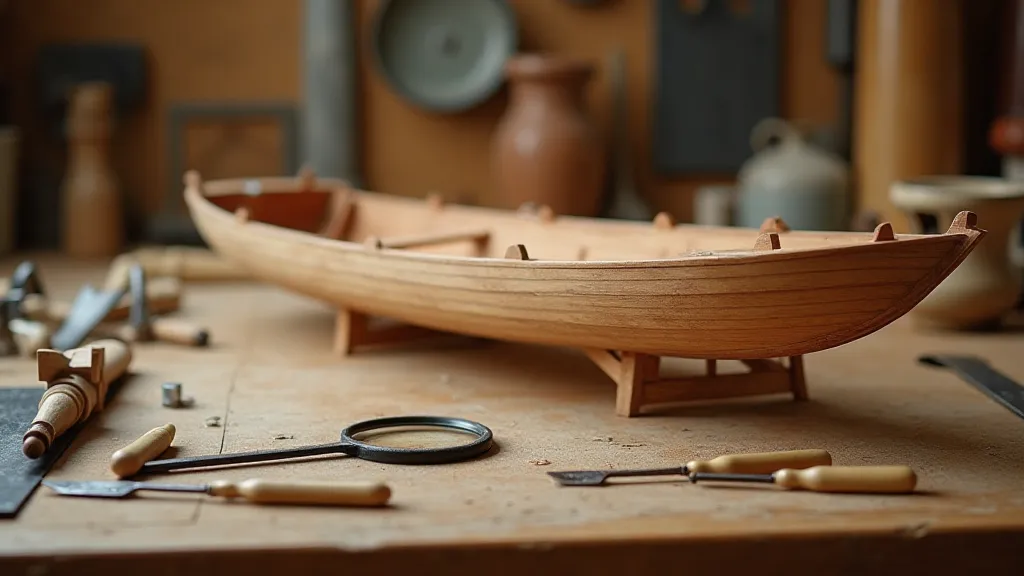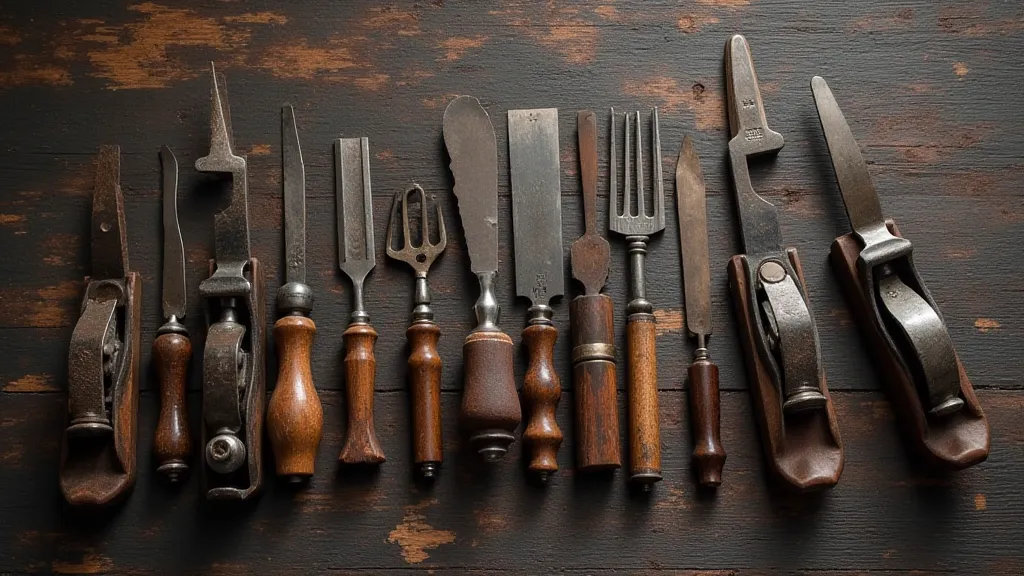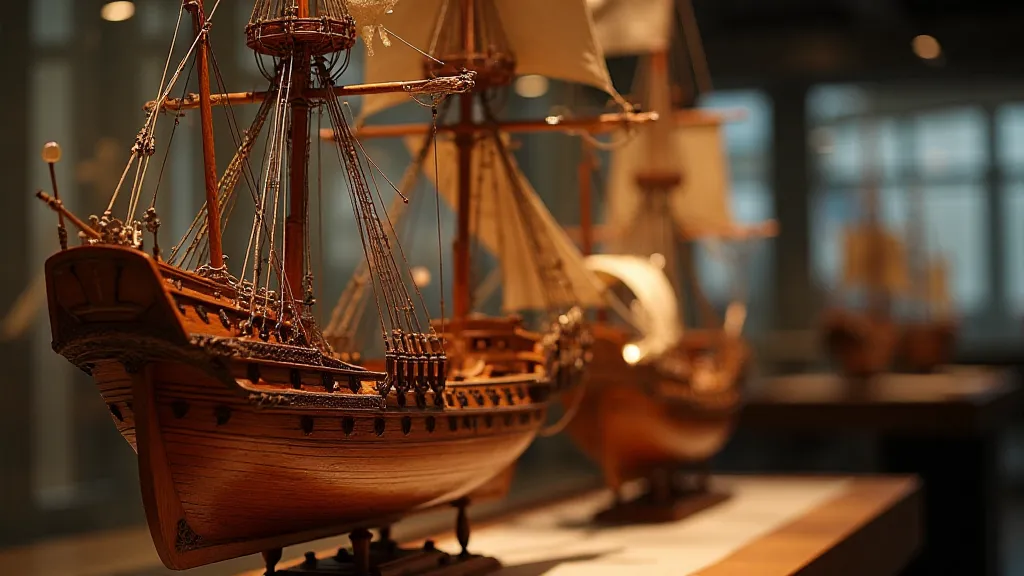The Weight of Scale: Understanding Proportion and Grace
There's a peculiar sort of reverence that settles upon you when you hold a meticulously crafted wooden model ship. It’s more than just admiration for the miniature representation; it’s a connection to history, to the countless hands that built the originals, and to the artistry required to capture their essence in miniature. And at the heart of that appreciation lies a profound understanding of scale and proportion – the silent language of grace that separates a mere collection of wood pieces from a truly moving work of art. Building wooden models isn’t just about following plans; it's about interpreting and embodying a legacy.
My own journey into the world of ship modeling began somewhat unexpectedly. My grandfather, a quiet and meticulous man, collected antique accordions. He wasn’s a musician himself, but he was fascinated by their mechanical elegance, the way bellows and keys worked in concert to create sound. He's explain that they weren’t just instruments, but small machines, testaments to the ingenuity of their builders. I remember spending hours watching him carefully clean and occasionally repair them, marveling at the tiny screws, levers, and intricately carved keys. That same dedication to detail, that same appreciation for the hidden mechanisms and the beauty of function, is what drew me to ship modeling. It's a similar craft, just substituting sea and sail for air and reeds.

The Historical Context of Scale
Consider the ships that inspired these models. For centuries, maritime history wasn’s just about trade and exploration; it was the engine of empires. Navies dictated control of oceans, and the design of these vessels reflected not just function, but power and prestige. The HMS Victory, the USS Constitution, the Cutty Sark – each was a masterpiece of naval architecture, a floating fortress built to withstand the rigors of war and the challenges of unpredictable seas. These ships weren’t built haphazardly. Every line, every curve, was the result of careful calculation, informed by generations of shipbuilding experience. To build a model of one of these ships is to attempt to capture not just its physical form, but also the spirit of its age.
Early ship model building wasn’t merely a hobby. Many were "scale models" commissioned by ship owners, captains, or admirals to aid in planning, repairs, or even presentations to potential investors. These weren't whimsical recreations; they were working tools, meticulously accurate representations of complex machinery and design. They carried the weight of expectation, the burden of responsibility.
The Language of Proportion
So how do we translate that weight, that legacy, into a miniature form? It begins with understanding proportion. It’s more than just a ratio – it's about the visual harmony of the whole. The hull's tumblehome (the inward slope of the upper hull) needs to be just so to suggest strength and stability. The height of the masts needs to be balanced against the length of the hull to create a sense of scale and grandeur. The placement of the rigging, the angle of the sails, all contribute to the overall impression of authenticity and grace.
One of the most common mistakes made by novice model builders is to focus solely on the individual components – the planks, the spars, the rigging – without considering how they fit together to form a unified whole. It’s like trying to appreciate a symphony by listening to only a single instrument. Each piece is important, certainly, but its true value is revealed only when it's integrated into the larger composition. Spend time studying photographs and diagrams of the original ships. Observe how the lines flow, how the shapes interact. Develop an intuitive sense of what looks "right."
The Craftsmanship of Detail
Beyond proportion lies the critical role of craftsmanship. The selection of wood is paramount. Different types of wood possess unique characteristics – grain patterns, density, workability – that will influence the final appearance of the model. Poplar is often favored for its smooth texture and ability to hold fine detail. Mahogany provides warmth and richness. The care with which the wood is prepared – planed, sanded, and finished – can make all the difference between a passable model and a work of art.
Historically, shipwrights relied on hand tools - planes, chisels, saws - to shape and refine their creations. While modern tools can certainly speed up the process, there’s something to be said for the feel of a hand plane gliding across a piece of wood, the satisfying rasp of a chisel shaping a curve. It's a connection to the past, a way to emulate the techniques of the master craftsmen who built the original ships. The imperfections, the subtle variations in the grain, the slight tool marks—these aren't flaws; they’re testaments to the human hand that shaped them.

Beyond the Plans: Interpretation and Grace
Building a wooden model ship isn’s simply about following a set of instructions. The plans provide a framework, a guideline, but ultimately, it’s up to the builder to interpret them, to infuse the model with their own understanding and appreciation for the original. This is where the true artistry lies. It’s about going beyond the literal representation and capturing the essence, the spirit, of the ship.
My grandfather’s accordions weren’t just restored to working order; he would occasionally add a subtle detail – a refinished inlay, a carefully repaired key – that reflected his own aesthetic. He understood that restoration wasn't about erasing the history of an object, but about honoring it, about revealing its inherent beauty. The same principle applies to ship modeling. Don’t be afraid to deviate from the plans if you feel it will enhance the model’s authenticity or elegance. A slightly adjusted rake of the yards, a subtly altered shape of the bow – these small changes can make a world of difference.
Ultimately, building a wooden model ship is a journey of discovery – a chance to connect with history, to explore the principles of design, and to develop a deeper appreciation for the artistry of the human hand. It’s a process that demands patience, precision, and a touch of grace. And when you finally place that completed model on display, you’re not just showcasing a miniature replica; you’re sharing a piece of that legacy with the world.






